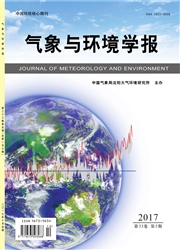

 中文摘要:
中文摘要:
让能被一颗卫星察觉到的地球空气系统忍受的发光辐射计是从地球表面和被传给空气的顶的各大气的水平的放射排放的和。从地球表面和每大气的水平的发光的放射排放能在大气的水平由忍受的一颗卫星测量了的顶与发光被分开辐射计。然而,测量大气的发光是很困难的,特别有卫星的同步测量。因此,一些大气的放射的转移模型被开发了为为大气的放射运输建模提供许多选择,例如 LOWTRAN, MODTRAN, 6S, FASCODE, LBLRTM, SHARC,和 SAMM。同时,这些模型能支持处理过程的卫星使命参数,和数据的详细察觉者系统设计,优化和评估。作为一个例子,最新大气的放射的转移当模特儿,在大气的放射的转移被描述以后, MODTRAN 将与另外的模型相比。并且大气的放射的转移模拟过程和他们的应用程序到大气的发射度,大气的元素的检索,和表面参数,将也被介绍。
 英文摘要:
英文摘要:
The radiance leaving the earth-atmosphere system which can be sensed by a satellite borne radiometer is the sum of radiation emission from the earth surface and each atmospheric level that are transmitted to the top of the atmosphere. The radiation emission from the earth surface and the radiance of each atmospheric level can be separated from the radiance at the top the atmospheric level measured by a satellite borne radiometer. However, it is very difficult to measure the atmospheric radiance, especially the synchronous measurement with the satellite. Thus some atmospheric radiative transfer models have been developed to provide many options for modeling atmospheric radiation transport, such as LOWTRAN, MODTRAN, 6S, FASCODE, LBLRTM, SHARC, and SAMM. Meanwhile, these models can support the detailed detector system design, the optimization and evaluation of satellite mission parameters, and the data processing procedures. As an example, the newly atmospheric radiative transfer models, MODTRAN will be compared with other models after the atmospheric radiative transfer is described. And the atmospheric radiative transfer simulation procedures and their applications to atmospheric transmittance, retrieval of atmospheric elements, and surface parameters, will also be presented.
 同期刊论文项目
同期刊论文项目
 同项目期刊论文
同项目期刊论文
 期刊信息
期刊信息
